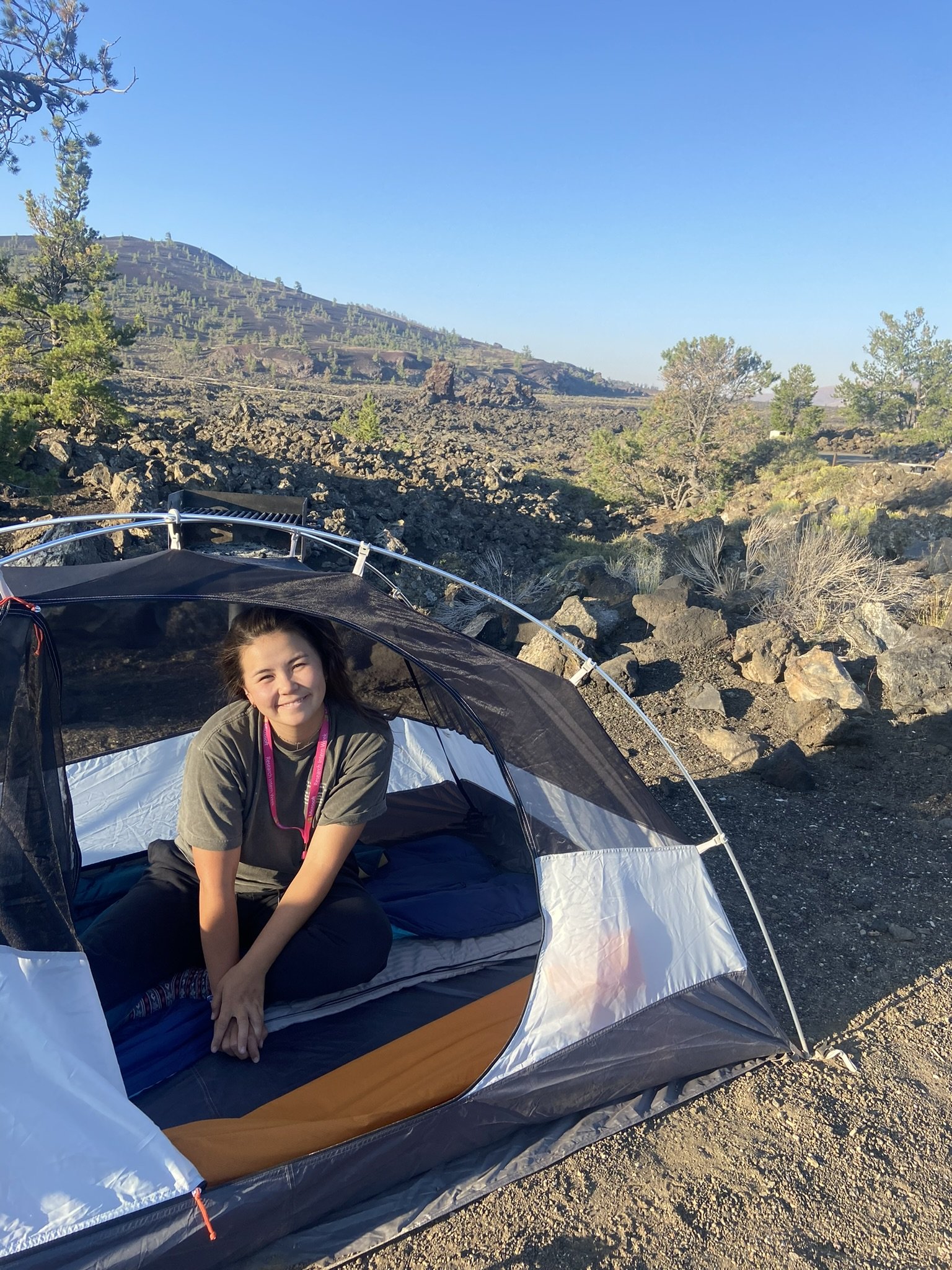Visiting Craters of the Moon National Monument
Craters of the Moon is an otherworldly place to visit. It was even used by Apollo Astronauts to practice moon travel and sample collection!
Craters of the Moon is located in Idaho along the Great Rift, which is a weak spot in the Earth’s crust. Between 15,000 and 2,000 years ago, eight volcanic eruptions happened which brought the lava to the surface through the Great Rift.
If you plan on visiting, read this!
Craters of the Moon!
What there is to do
There is a 7 mile loop that you can drive with various pull outs and hikes. The loop only takes ~30 minutes if you are driving it and not stopping. I spent about 3 hours to stop at various pull outs, read info boards and walk around. If you are driving in, the day pass will be $20 / vehicle—though a National Parks pass will also be accepted.
North Crater Flow Trail: This trail was closed for construction as of August 2022
Jumping with Joy at the top of Inferno Cone!
Inferno Cone: This was a cool hike up a lava sand cone. It can be a little steep at points but it gives you a great view of the entire park! It is about 0.2 miles
Spatter Cones: This is a wheel chair accessible view point where you can actually look down into miniature volcanoes that formed 2,000 years ago. Make sure your hat is secure as we noticed a lot of hats had been eaten by the volcano
Justin at one of the exits of Boy Scout Cave
Broken Top: This is hike is about 2 miles. The hike is jam packed with things to see—you’ll see nearly every kind of volcanic feature that Craters of the Moon has to offer (Lava trees, lava flows, etc…)
Cave Hike: Definitely the coolest stop in my opinion. You get to walk through lava caves (technically lava tubes as you will learn when you visit)! There are four total caves but as of August 2022, two were closed (closed: Indian Tunnel, Beauty). The walk to Boy Scout and Dewdrop cave is relatively easy and is paved and wheelchair accessible.
Inside Boy Scout Cave!
Note: to enter the caves, you will need a permit! The permit is FREE and VERY EASY to get. Stop by the visitor center on your way in and just let them know! They will ask if you have been in any caves recently (if you haven’t, that’s the only question they ask) and which caves. This is to protect the wildlife (mostly the bats) that lives in Craters of the Moon. White-nose syndrome (WNS) has killed millions of bats in North America but has not yet been introduced to the bats living in Craters of the Moon. Given how important bats are to the ecosystem, it is imperative to avoid contamination and trekking WNS into the caves. While there are no bats living in the open-to-the-public caves, the potential for them to contract the disease once it is introduced to any cave is very high and very deadly.
Note: I wore a helmet (it was a climbing trip, so I had mine in the car) and a headlamp. I appreciated the extra security because some of the ceilings were short when I was exploring the cave and I would bonk my head but most people did not have any sort of helmet or headlamp.
Devil’s Orchard Nature Trail: This is another wheelchair-accessible stop and loops visitors through cinder beds dotted with lava fragments. The loop is short and only half a mile.
Camping on Lava Flow! The night was really warm when we went (August 2022) and I barely needed a sleeping bag. There camp spot was also a bit small, enough for one tent and one vehicle but not much else.
Camping
There is a Craters of the Moon Campground located right next to the visitor center. This is a pretty nice campground with flush toilets during the summer months (during the winter, classic pit toiles only). If you choose to camp, you get to camp out on lava flow!
Price: $15 / night ($7.50 with interagency pass)
Number of sites: 42 (though ~half of the campsites are closed in the winter). Only ~15 were appropriate for RVs / multiple cars.
Services: Flush toilets in the summer, pit toilets in the winter. No cell signal. There is also a handicap accessible camping spot that has electricity





